-
Vumii unveils new thermal imaging cameras
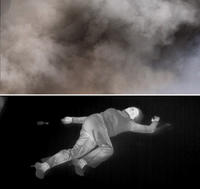
Vumii, a firm that specializes in developing surveillance cameras, recently announced the addition of four new thermal imaging camera lines, expanding on its existing line of LED and laser-illuminated cameras
-
-
Identifying bad guys in a crowd
New CCTV technology aims to do two things: for post-incident forensic analysis the system retraces a person’s steps after they have left a site; and for real-time analysis the system alerts security to immediate or imminent threats; researchers say the technology will also address privacy concerns: if a computer could automatically detect and preserve footage “of interest,” the images of the rest of the people captured by CCTVs can be safely deleted, minimizing the invasion to privacy
-
-
Enhancing communication of swarming robots
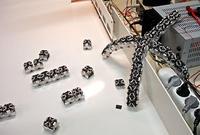
With the help of computer simulations and prototypes, researchers are striving to enhance the communication in human and multi-robot interactions
-
-
Columbine lessons helped thwart Tampa school tragedy

Police, having learnt the lessons of the 1999 Columbine High School massacre in Colorado, was in a better position to prevent violence in Tampa, Florida, last week; many school districts have threat assessment teams to try to connect the dots if there is a troubled, and potentially violent, student in their mix
-
-
"Swarm" UAV reconnaissance demonstrated
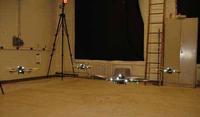
Boeing successfully demonstrated autonomous communications and operation of dissimilar unmanned aerial vehicles (UAV) in flight tests over the rugged terrain of eastern Oregon; swarm technology is similar to how insects communicate and perform tasks as an intelligent group; the UAVs worked together to search the test area through self-generating waypoints and terrain mapping, while simultaneously sending information to teams on the ground
-
-
DHS unveils new terrorism awareness ads
DHS secretary Janet Napolitano unveiled new television ads Wednesday for the public awareness campaign “If you see something, say something”; Napolitano said the videos are not intended to be alarmist, nor do they suggest only a vague threat, as did the security alert “color code” of years past
-
-
Lockheed Martin shows tiny surveillance UAV
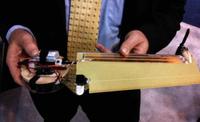
The Samarai UAV is sixteen inches long and weighs less than half a pound; while flying, it can stream live video from a camera that rotated around its center providing a 360 degree view without a gimbal; it can be carried in a backpack and launchedt from the ground or like a boomerang
-
-
DHS's new terrorist database rankles privacy groups

A new DHS plan to create its own version of the FBI’s terrorist watch list that is exempt from the Privacy Act has privacy groups concerned; under the proposed plan, DHS would create the Watchlist Service which would bring the FBI’s suspected terrorist list in-house and expand on it
-
-
San Francisco to install real-time surveillance on buses
Thanks to a $6 million DHS grant San Francisco’s MUNI buses will soon be equipped with a network of sophisticated high-tech video cameras that will allow the transit agency to view footage in real-time
-
-
China's big surveillance push
In China’s latest push to keep tabs on its citizens, police in Beijing have ordered supermarkets and shopping malls throughout the city to install high-definition security cameras; the recent order comes as part of a broader expansion in monitoring technology which includes the addition of millions of surveillance cameras over the past five years and large increases in domestic security spending
-
-
Beachball-like observation UAV developed
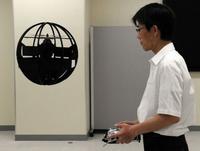
A beach ball-size drone can fly down narrow alleys, hover on the spot, take off vertically, bounce along the ground like a soccer ball — all the time transmitting live images from a video camera; it can travel above traffic or spy on a target through a window — and can also be used in search and rescue in disaster zones, where it could fly through buildings and even up and down stairways
-
-
New drone listens in on cell phone calls and hacks Wi-Fi networks
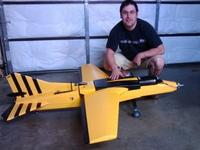
At this week’s annual Defcon security conference for hackers, two hobbyists will showcase their sophisticated unmanned Wi-Fi detecting, cell-phone eavesdropping spy drone; the drone was assembled using an old Army target drone that had been converted to run on electric batteries and is now equipped with an HD camera, eleven antennas, and a cigarette pack sized computer that is loaded with hacking tools
-
-
China further limits Internet access
In its continuing efforts to control the Internet, Chinese officials are now mandating that all cafes, hotels, and businesses in central Beijing install surveillance technology for Wi-Fi users; the new software would allow government officials to check the identities of users and monitor their activity at public computers; those who do not cooperate will face fines or even closure
-
-
Filipino man guilty of selling UAV on eBay
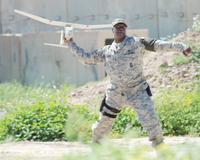
Last week a Filipino man pleaded guilty to violating arms export and smuggling laws by selling parts from an unmanned aerial vehicle (UAV) on eBay; in February, DHS officials arrested Henson Chua of Manila, Philippines after he shipped undercover agents a three-foot long, hand-launched, computer-controlled RQ-11A/B Raven surveillance drone
-
-
Pakistani spies track immigrants in U.S.

Last week the indictment of two Pakistani-Americans pulled back the veil on the extent of Pakistan’s spy network in the United States; led by Pakistan’s military spy agency, the Directorate for Inter-Services Intelligence (ISI), the country’s efforts in the United States are primarily aimed at influencing lawmakers, keeping track of the Pakistani Diaspora, stifling dialogue critical of its military, and stymieing India — the country’s chief rival
-
- All
- Regional
- Water
- Biometrics
- Borders/Immig
- Business
- Cybersecurity
- Detection
- Disasters
- Government
- Infrastructure
- International
- Public health
- Public Safety
- Communication interoperabillity
- Emergency services
- Emergency medical services
- Fire
- First response
- IEDs
- Law Enforcement
- Law Enforcement Technology
- Military technology
- Nonlethal weapons
- Nuclear weapons
- Personal protection equipment
- Police
- Notification /alert systems
- Situational awareness
- Weapons systems
- Sci-Tech
- Sector Reports
- Surveillance
- Transportation
Advertising & Marketing: advertise@newswirepubs.com
Editorial: editor@newswirepubs.com
General: info@newswirepubs.com
2010-2011 © News Wire Publications, LLC News Wire Publications, LLC
220 Old Country Road | Suite 200 | Mineola | New York | 11501
Permissions and Policies
Editorial: editor@newswirepubs.com
General: info@newswirepubs.com
2010-2011 © News Wire Publications, LLC News Wire Publications, LLC
220 Old Country Road | Suite 200 | Mineola | New York | 11501
Permissions and Policies
